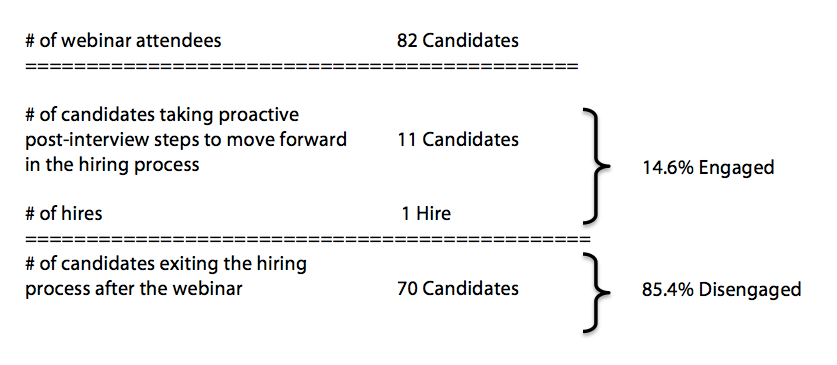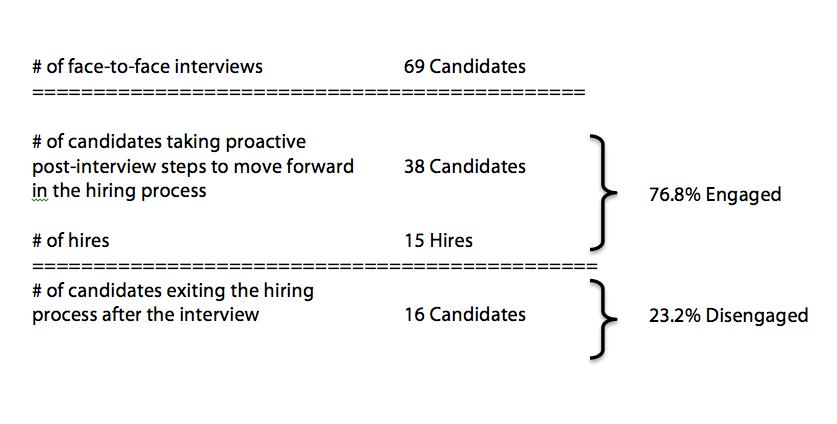We often get questions about the possibility of new technologies changing the real estate hiring process. The hope of saving time and increasing efficiency is of interest to all busy hiring managers.
There is no doubt technology has increased productivity in many areas of our professional and personal lives. Wouldn’t some of these improvements also apply to the recruiting process?
Of course, they do. For many of the tasks contributing to the hiring process, technology advances have powered improvements in efficiency (ex. scheduling, recording feedback, team communication, etc.). However, hiring outcomes become difficult to predict when new technologies are applied to environments involving human relationships.
Case Study: Virtual Interviews/Career Information Sessions
Today, I’d like to share the results of a recent trial conducted by a large real estate company (greater than 1000 agents) on the East Coast . The trial involved replacing face-to-face interviews with virtual interviews/career information sessions. The virtual interviews were conducted using a web-conferencing tool like GoToMeeting.
Here are the results from the three-month trial for the candidates engaged through the use of the web-conferencing tool:
In parallel to this trial, the company also continued to conduct face-to-face interviews. Here are the results for the candidates who were engaged in traditional interviews:
Effectiveness Depends on the Objective
If higher candidate engagement is the objective, the effectiveness of a face-to-face interview is superior to the webinar approach. And, not just a little more effective—a lot more effective.
So, are face-to-face interviews better than webinars? That depends.
The downside of conducting 69 face-to-face interviews is it takes much more time than a webinar and the logistics tend to be complicated (getting two humans in one location to discuss something takes effort).
In theory, if one webinar could be conducted with 82 candidates every hour, eight hours a day, five days a week, the overall hiring results (40 hires/week) would most likely exceed any face-to-face interviewing effort.
Granted, the second example is factitious, but you get the point. Every methodology has some advantages and disadvantages and the right course of action only becomes obvious when the objective is revealed.
Could These Results Have Been Predicted?
If you read the WorkPuzzle published earlier this week, the results of this experiment make perfect sense. Social presence theory suggests that face-to-face, in-person meetings are the most engaging form of contact.
Web-conferences are much less engaging because all the non-verbal communication is missing and you have no idea if the person is responding to your message. This mostly one-way dialog deeply restricts the ability of candidates to feel a sense of connection.
Bottom line: There are many technological innovations that make our human interactions efficient, but they do so at the expense of engagement. Creating shortcuts that attempt to circumvent social presence principles doesn’t work—humans are too complex for that.
Questions or Comments? Reply to your WorkPuzzle subscription email.
Didn’t get the WorkPuzzle email? Subscribe below. We promise not to share your email with others or use it for any other purpose but delivering WorkPuzzle notices.




